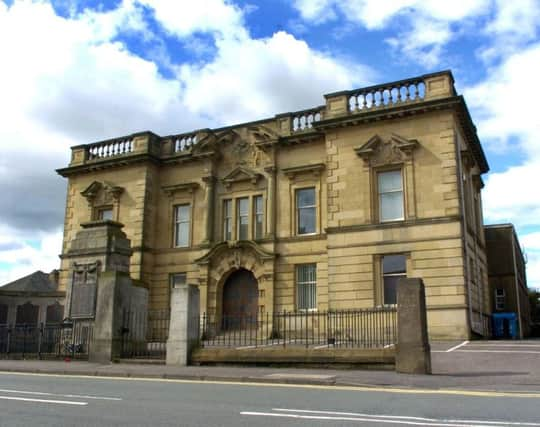An ironmaster’s wealth provided local landmark


Opened in 1901, the Dobbie Hall is a permanent reminder of the time when Larbert was ‘‘the Constantinople of Scotland’’ and a powerhouse of the iron industry.
Robert Dobbie was one of the great Falkirk ironmasters who rose from the foundry floor to build a successful company manufacturing and exporting cast iron stoves, ranges and 100 other useful objects to every corner of the world.
Advertisement
Hide AdAdvertisement
Hide AdRobert himself began working life as a moulder in Camelon Iron Works.
By 1864 he was warehouse manager with Smith and Wellstoods in Bonnybridge but was fired for planning to set up his own company.
Although he won compensation for unfair dismissal, he did go out on his own shortly afterwards selling stoves made for him by the Union Foundry.
In 1872 he and his brother-in-law, Peter Forbes, went into partnership in Larbert making stoves using Smith and Wellstood’s products as the pattern with the name filed off!
Advertisement
Hide AdAdvertisement
Hide AdThey tried to sue him but had to admit that they had actually pinched the patterns from America in the first place!
Dobbie-Forbes prospered and Robert built himself a fine house in Carronvale Road named Beechmount with telephone number Larbert 1.
Until his death in 1908 he was a pillar of the local community supporting all manner of good causes.
The firm continued throughout the 20th century and survived long after its rivals had closed their doors.
Advertisement
Hide AdAdvertisement
Hide AdIt became part of Allied Ironfounders in 1934 and ended its days as Falcon Catering in 2003.
Although he carried the honorary title of Major from his involvement with the local volunteers, Dobbie was not a military man.
At the time the drill hall in Tryst Road was the main meeting place for villagers but it was in poor repair.
Robert tried to buy and repair it but the owners refused to sell.
Advertisement
Hide AdAdvertisement
Hide AdInstead he purchased land on the Main Street and commissioned Falkirk’s leading architects A and W Black to design a new public hall.
It cost £12,000 and was built by J and P McLachlan of Stenhousemuir.
The Duchess of Montrose performed the opening ceremony in August 1901 when she unclipped a jewelled bracelet from the handles on the main door.
It is not clear if Robert intended his hall to be a memorial to the men who fell in the South African Wars but one observer did remark that “Not any of the South African victories could have been celebrated in a more tangible form”.
Advertisement
Hide AdAdvertisement
Hide AdFrom that moment the Dobbie Hall became the very heart of the growing community and so it has remained despite setbacks on the way.
Nearly 30 years ago the late Findlay Russell led a campaign to save it from a drastic change of use and it passed into the hands of a trust.
Their efforts have kept the hall busy and popular with young and old and I have no doubt that dear old Robert looking down from above (or maybe up from the furnaces) would be delighted.
I wonder though what he would have made of the other innovation that carries his name.
Advertisement
Hide AdAdvertisement
Hide AdThe ‘‘Dobbie Shuffle’’, a unique form of dancing popular in the early 60s, is etched on the memory of those of us lucky enough to have given it a go.
I fear the old boy would have passed away at the very thought of young men and women in such close proximity whizzing round the floor of his beloved hall.